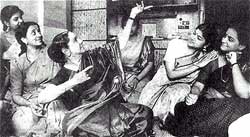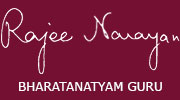REVIEWS
The Nattuvanar blends talam beats and sholla with the dancer's feet. A workshop in the city looks at his role.
The role of the vocalist is superior, followed by the instrumentalist and then the dancer - "Uttam gana, Madhyam bajana, Kanishtha nachna" - goes dance lore.
The logic is simple: the instrumentalist plays according to the song and the dancer follows the instrumentalist. But when it comes to a dance performance, roles are reversed. The dancer is of prime importance followed by the instrumentalist and then the vocalist.
In either case, the reins of a Bharatnatyam recital are a pair of cymbals 'talam' firmly placed in the hands of a Nattuvanar. The Nattuvanar wields these cymbals in synchronisation with the dancer's feet while mouthing the intricate sholla (pure dance words). At the same time, the Nattuvanar guides the mridangam player and other instrumentalists and has a firm grip over the songs as well. And this balancing act is termed as Nattuvangam.
Due to the sheer complexity of the task, in most cases, it is the dancer's guru or a senior dancer who is the Nattuvanar. This is also the reason that most dancer-performers are at a loss when it comes to nattuvangam. The ongoing Nattuvangam workshop at the Nehru Centre attempts to address just this issue.
The workshop is being conducted by veteran dance and music exponent Rajee Narayan. The Mumbai-based Narayan has been teaching Bharatnatyam and Carnatic music, the natyashastra and nattuvangam since 1925. Her institute Nritya Geethanjali, has branches all over Mumbai.
Narayan also conducts two year nattuvangam courses with classes held twice a week. Apart from her senior students, dancers from other institutions often attend these workshops. Says Narayan, "I would be wasting my time if I try teaching nattuvangam to all my students. I teach those who I feel are truly interested in pursuing the art seriously."
Describing the talam (cymbals), she says, "The left cymbal is made of steel while the right is cast in bronze. A hindalium cymbal instead of the steel one, is available in the market, but this does not produce the same sound." Good talams are hard to find and expensive as each of them is hand-cast. "A good talam should resonate for at least five seconds after it is struck," she explains. In the present workshop, Narayan will be covering the basics of Talashastra, reciting shollas, playing the talam and tatta kuchi. Usually used during the training of dance, the tatta is a rectangular wooden block while a kuchi is a wooden stick. The kuchi is hit on the tatta to produce the beats.
Given the accurate hand-mouth co-ordination and experience required, nattuvangam cannot be learnt in just 10 or 12 days. So, the workshop at Nehru Centre will just be a brief introduction.
And, if the present workshop initiates a movement, a generation of expert Nattuvanars, may not be such a distant dream after all.
Manjiri Kalghatgi
June 12, 1997. EXPRESS Newsline



